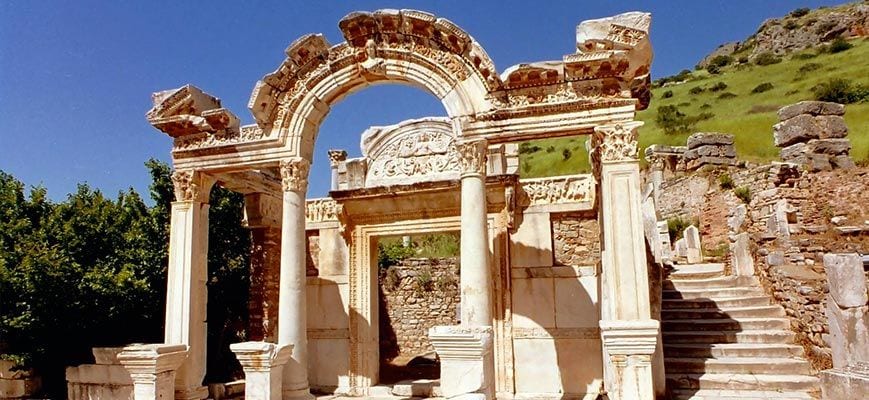No products in the cart.
EXCLUSIVE EXCURSIONS IN SPANISH in Ephesus
Through tourquia.com you have the best excursion offers.
Send us your name with the arrival dates and the name of the boat and take advantage of this promotion.
OPTION 1
Boat departure in Kusadasi or Izmir.
Transfer to Ephesus and House of the Virgin Mary.
Visit the ancient city of Ephesus and the House of Virgin Mary.
Lunch in a typical restaurant in Selcuk.
Transfer back to the ship.
It includes:
Transfers, Spanish speaking private professional guide,
Bus or private car with air conditioning,
Visits and entrance to museums according to the program.
Typical Turkish lunch
Does not include:
Tips, drinks, personal expenses
YOUR ADVANTAGES
Private Spanish speaking guide. (Excursions exclusively in Spanish … there will be no passengers from other languages)
We will wait for you with a sign of your name in the Turkish ports.
You will not wait in the lines to enter the museums.
The ancient City of Ephesus
History: Although the region was inhabited first by the Carios and Lelegians in the middle of II. Milenio a.de J.C., the first city was built by the Ionians in the eleventh century. to. of J.C. During the great Persian invasion of the sixth century a. of J.C. Ephesus surrendered to the domain of the Achaemenid dynasty along with the other Ionian cities and, after some unsuccessful attempts to revolt against the invader, had to wait until the arrival of the great conqueror Alexander the Great. After his death, Ephesus passed into the hands of one of his generals, Lysimachus, and the city was moved to its current site in the valley between the mountains of Corressos (the current Bülbül) and Pión (the current Panayir). After the dominion of the kingdom of Pergamum, Ephesus submitted to Roman sovereignty and lived its golden age during those centuries becoming one of the greatest cities of antiquity.
Numerous emperors embellished the city with impressive works of art, among which stood the Temple of Artemis as one of the seven wonders of the world. With the birth of the Christian faith, Ephesus began to occupy an even more significant place. Saint Paul was numerous in this city to preach and overthrow the most powerful cult of the goddess Artemis; consequently one of the seven churches of the Apocalypse was established here. St. John the Evangelist settled down in Ephesus and spent the rest of his life here to write his Gospel; like Jesus Christ before dying crucified? he had entrusted him with the care of his mother, it is believed that the Virgin Mary also lived the rest of his life in Ephesus.
The city of Ephesus, which was sacked by the Goths in the middle of the third century AD. of J.C., entered a period of decline; not even the Ecumenical Council that took place in Ephesus in the first half of the fifth century succeeded in restoring its splendor from other times. Ephesus lost all its prosperity and its commercial importance due to the uselessness of its port that was filled with the alluvions of the Caistro river, and the marshes that caused epidemics of malaria.
The Celso Library, the Marble Way, the Lower Agora and the Theater
The Celso Library is located at the junction of Vía de los Curetes and Vía de Mármol. This sumptuous building built at the beginning of the 2nd century AD. of J.C. by a Roman consul in memory of his father has been restored in an extraordinary way thanks to the original material recovered during the excavations.
The house of the Virgin
It is known that Jesus Christ, before dying crucified, entrusted Saint John (Evangelist) to take care of his mother and that Saint John spent the last days of his life and wrote his Gospel in Ephesus. Therefore it is believed that the Virgin Mary also lived in the region of Ephesus until her last days. During the excavations carried out at the end of the 19th century. Near a sacred spring on Mount Pion, where the Christians of the region used to celebrate the feast of the Virgin every year, some remains of the foundations of a house were discovered, as well as some pieces of charcoal from their home. scientific analyzes carried out with the method called “carbon 14” revealed that those traces dated from the first century d. of J.C., evidence that supported the allegations that the Virgin Mary had lived in this place.
Today we find a small church in the same place, which is visited by Christians as a pilgrimage shrine and is venerated by Muslims as a sacred place.



Reviews
There are no reviews yet.